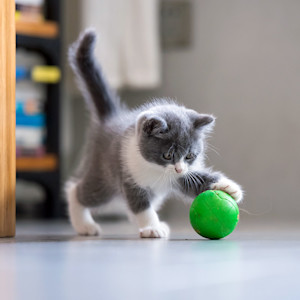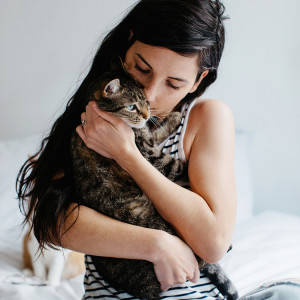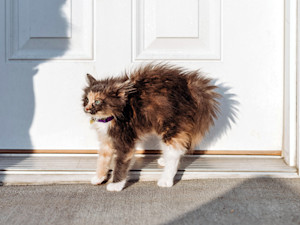9 Fun Facts You May Not Know About Cats
Cats—they’re just like us! OK, not really.
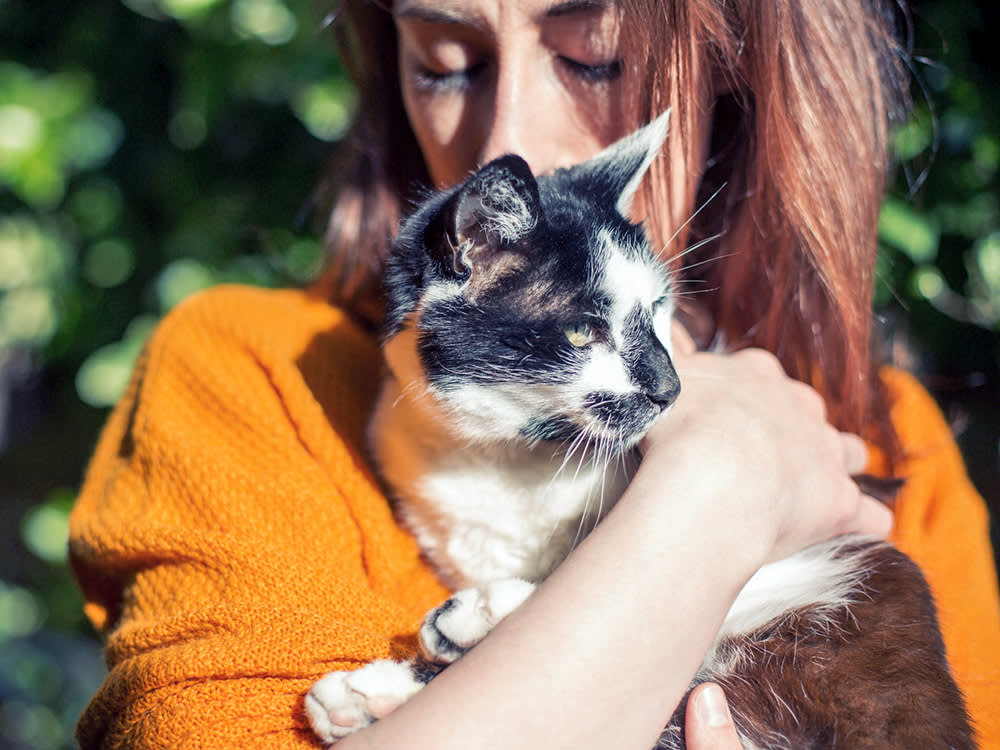
Share Article
Ask me about my cats, and you’d better grab some popcorn and settle in, because I can go on at length about them. And I know I’m not the only cat parent who has a dissertation at the ready whenever the subject of their cats comes up. The popularity of this memeopens in a new tab, with actor Willem Dafoe musing about his Boondock Saints character (“He’s gay, but he has a special connection to classical music — there’s many things that are interesting about him…”) and the caption, “Willem Dafoe describing my cat,” attests to that.
My point is, any self-respecting cat parent can rattle off a list of facts about their particular cat until your eyes glaze over. (What, you don’t want to hear about my cat’s butt fetishopens in a new tab?) But there are plenty of fun facts that apply to all cats, as well. These are facts that you might even find interesting enough to share at a party — or at least, a party full of cat lovers.

littleKin™ is Kinship’s home just for puppy and kitten parents. Bop over to check out expert advice, new pet tools, and special deals—all curated for your newest family member.
opens in a new tabRead on, and prepare to be fascinated…
1. Cats have three eyelids.
Some lucky humans have three nipplesopens in a new tab — but all cats have three eyelids (that’s six, total). “Cats have an additional eyelid, located behind the bottom eyelid,” says veterinarian Dr. Preston Turanoopens in a new tab. “It is commonly called a third eyelid, and medically known as the ‘nictitating membrane.’ It helps protect the eye from debris and infection.”
2. Cats’ eyes glow for a good reason.
“Ever seen a green glowopens in a new tab from your cat’s eyes at night?” Dr. Turano asks. “This is from the tapetum lucidum, which helps reflect light at night so your cat can see better in the dark. Cats are crepuscular, which means they are most active at dawn and dusk, times when there is low light. This gives them an advantage when hunting.” And here I thought they did that just to startle me when I wake up to pee in the middle of the night.
3. Cats have a free-floating collarbone.
How my cats manage to hide in cramped spots has always mystified me — but no longer. “Cats have a small, free-floating collarbone buried in the muscles of their neck/shoulder,” Dr. Julie Hunt,opens in a new tab veterinary consultant for Embrace Pet Insuranceopens in a new tab, tells me. “It’s not attached to any other bones, and this allows them to fit into small spacesopens in a new tab and take long strides. In humans, this bone connects to the top of the rib cage, preventing us from the same feats.”
4. Cats’ tongues are covered in hooks.
“ Cat tonguesopens in a new tab, which can feel like sandpaper when they lick your hand, have hundreds of papillae that serve many helpful functions,” Dr. Turano says. “These whitish little ‘hooks’ help remove dirt, debris, and dead hair when they groom. For wild cats, like tigers, these hooks help remove meat from the bone, whereas our domestic cats most likely don’t need this feature.” (I mean, I hope my indoor cats never need to do that — but if anything ever happens to me when we’re alone in the apartment, I wouldn’t want them to go hungry…)
5. Cats have extremely short intestinal tracts.
The human digestive tract is about 30 feet long — which is fairly mind-blowing, when you think about it. How does it all fit inside us? Cats, however, have a much shorter intestinal tract. Dr. Hunt explains that this is because they’re designed to only eat prey (see above). “This is easier to digest than the carbohydrates sourced from plants,” she says. “The entire length of the intestinal tract of a cat is only about three times the length of the cat.”
6. Cats can purr or roar — but not both.
Not much is more soothing than curling up with a warm, purring catopens in a new tab. But can you imagine if your sweet kitty let loose with a roar one day? Not to worry: It won’t happen. “Felid species (including big cats and domestic cats) can either purr or roar, but not both,” Dr. Hunt says. “Do you think our domestic cats, given the choice, would trade in their ability to purr if they could roar instead?” One of mine definitely would, I’ll tell you that!
7. Cats have stayed the same for millennia.
If you’ve ever visited a nature museum, you’ve probably seen a diorama illustrating the way dogs, horses, and cows have changed over the course of history. Thousands of years ago, those animals all looked very different — but cats have stayed basically the same since being domesticatedopens in a new tab in ancient Egypt over 3,000 years ago. “After years of being domesticated, many species have changed dramatically in appearance, abilities, and temperaments,” Dr. Hunt says. “The cat, meanwhile, has been domesticated without a dramatic change in these factors.”
8. Cats can go wild in one generation.
“Cats can become feral — defined as successfully living free in the wild — within a single generation,” Dr. Hunt says. “In other words, if a mother cat has been accustomed to humans, but she moves into the wilderness, her kittens will be raised as feral (wild) and will not permit or seek out human contact.” I’ll be thinking about this the next time I’m tempted to throw my phone and laptop into the ocean and head off into the woods by myself.
9. Cats are just fine living alone, thank you very much.
Finally, a fun fact I have in common with my cats: “Unlike many social domesticated animals (i.e., dogs, horses, cows), which only live in groups, the cat is equally happy either living on its own or living in a social group,” Dr. Hunt says. Same! Although, do I really live alone if I have the company of my three delightful cats? Oh, while we’re at it, let me tell you all about them...
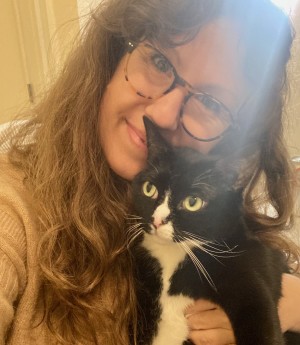
Elizabeth Laura Nelson
Elizabeth Laura Nelson is a writer and editor based in Brooklyn, New York. As a child, Elizabeth was scared of cats (claws and teeth, yikes) but she has since gotten over her fear and now shares her home with three sweet and gentle feline companions who make life better (and cuddlier) every day.
Related articles
- opens in a new tab
Can Cats Sense Sadness? A Guide to Their Emotional Recognition
Their reactions may surprise (or perplex) you.
![Small kitten playing with a rubber ball at home.]() opens in a new tab
opens in a new tabCats Can’t Stand These Textures—They Have Very Sensitive Paws
It's not just crumpled tin foil.
![Tattooed and pierced woman wearing a black and white striped shirt and holding an upset looking cat]() opens in a new tab
opens in a new tabIs My Cat Angry at Me? How to Tell if Your Cat is Upset
Cat behaviorist Kristiina Wilson on how to tell if your cat is grumpy—or just kind of like that.
![dark-haired woman hugging cat that has imprinted on her]() opens in a new tab
opens in a new tab10 Signs Your Cat Has Imprinted on You
Feeling like you have a little shadow these days? Here’s why that’s happening.
![Cute scared kitten outside by the front door.]() opens in a new tab
opens in a new tab7 Surprising Things Cats Are Afraid Of
The term “scaredy-cat” didn’t enter the lexicon out of nowhere.
![Woman hugging her cat at home.]() opens in a new tab
opens in a new tabIf You Think Your Cat Is Manipulating You, You’re Right, Study Says
They know what they are doing when they “cry” for food.



